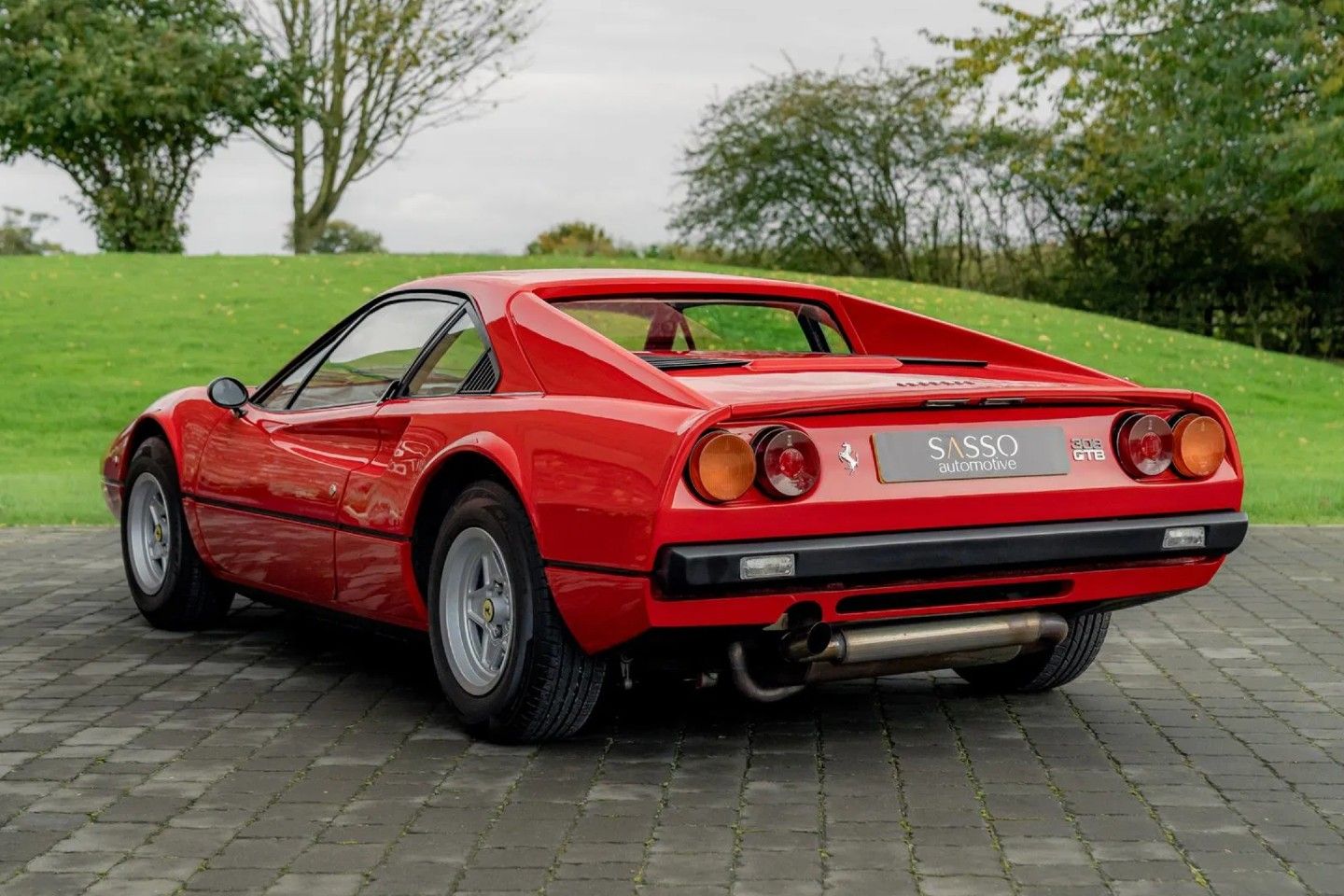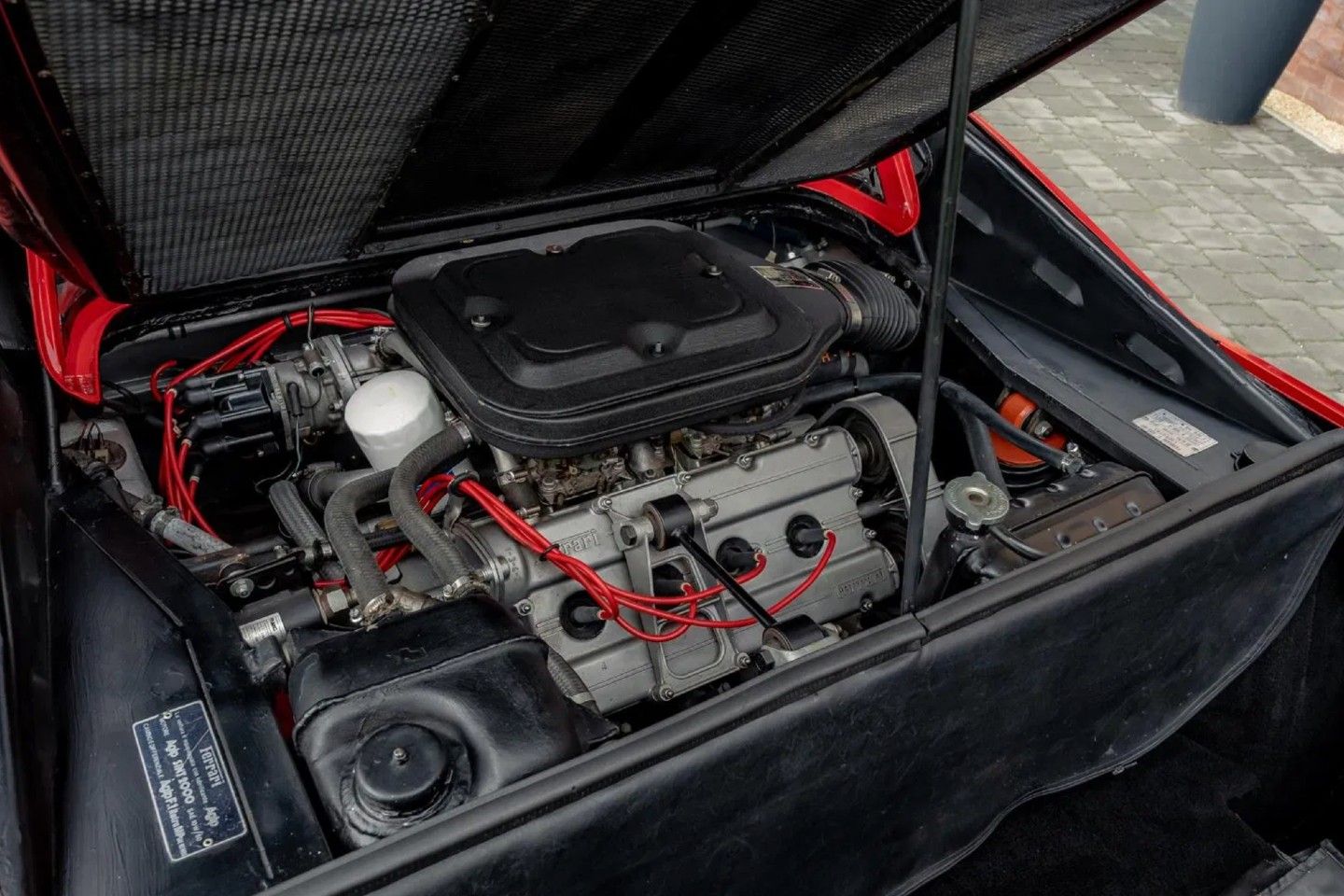Fibreglass Ferrari 308 GTB 'Vetroresina' for sale
A factory-produced, plastic-bodied Ferrari sounds sacrilegious, but here's why it definitely isn't...

Fibreglass: the wonder material that allowed car designers to put their wildest creations into production without countless compromises to keep costs down. Glass-reinforced plastic is so cheap and so (relatively) easy to work with that it’s been a staple of the British sports car for over half a century. Without it, the Lotus Elise may not have been the light, affordable sports car that we all know and adore, nor would we have the radical looks of the TVR Sagaris and Tuscan. Or the Tamora. Or the T350.
That being said, there’s still a bit of stigma around cars with plastic bodies. While it’s light and easy to mould into all sorts of shapes, its greatest advantage is that it is cheap to produce. That’s perfect for homemade heroes based around a spaceframe chassis, less so for high-end supercars - because nothing kills the mood quite like cost-cutting. True, fibreglass was a bit more prevalent in the days before carbon fibre, which is why we have plastic fantastics such as the BMW M1 and Ford RS200. But you’d never see it on anything exotic like, say, a Ferrari.
Unless said Ferrari is a 308 GTB ‘Vetroresina’ like the one we have here. The thought of a plastic Ferrari seems sacrilegious, especially one of this vintage where just looking at it conjures images of its bodywork being beaten into shape by moustachioed mechanics in a dark, oil-stained workshop. But the Vetroresina (Italian for fibreglass) was never intended to be a budget Ferrari - at least not outwardly - rather the glass-reinforced plastic Scaglietti bodywork was introduced to keep weight as low as possible. And given that the 308 was in incredibly high demand following the lacklustre Dino GT4, the model’s fibreglass body allowed Ferrari to get cars into the hands of customers faster.


All fixed-roof 308s were assembled with fibreglass bodies when the model arrived in 1975. It was a featherweight at just 1,050kg and looked every bit as glitzy as a Ferrari should, but fibreglass was still viewed as a cheap material in the mid-70s and the plastic-bodied sports car quickly fell out of fashion. Ferrari responded with a more conventional steel-bodied 308 in 1977, which reignited demand for the entry-level V8 sports car but that in turn came with a hefty 150kg penalty. A move from a dry to wet sump in 1981 meant most steel-bodied cars weren’t as powerful as the plastic counterparts either, with Vetroresinas developing an extra 10hp at 255hp.
So the Vetroresinas were better to drive and more powerful than most of their steel counterparts - and, because they were plastic, were also less susceptible to rust. Not totally immune of course, it’s still a '70s Ferrari underneath its plastic skin, but at least you won’t find yourself endlessly chasing bubbling bodywork. Factor in its rarity (only 808 Vetroresinas vs the thousands of steel-bodied GTS and GTBs), and it’s little wonder that the version buyers lamented for feeling cheap is now one of the most sought 308s in collector circles.
What makes this example extra special is that it’s one of only 154 right-hand-drive cars built for the UK market. A late one at that, too, as the car was first registered in 1977, just before the introduction of the steel model, and has changed hands four times in the subsequent 47 years. That included a spell in dry storage between 1997 and 2013, though since then it’s undergone some restoration work including replacement springs and dampers, refurbished suspension and brakes, and new hoses. The seller wants £129,995 for it, which just goes to show the days of the budget 308 are long gone. A steel body with a similar mileage will still set you back six figures, just like this stunning 1978 GTB in green, which means you’ve got a pretty simple decision to make: metal or plastic?




I’m sure marque officianados will argue that it’s the original and purest form of 308, and to them it may well be worth the extra £££ for the cachet, but I couldn’t justify it.
Still, for me the 308 / 328 are the zenith of Ferrari styling of the ‘modern era’, nothing else comes close in terms of being ‘just so’ right’, it is just the right size with just the right amount of performance, even today.
Gassing Station | General Gassing | Top of Page | What's New | My Stuff



